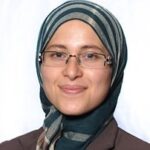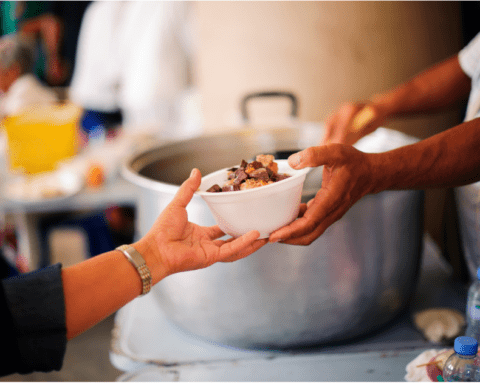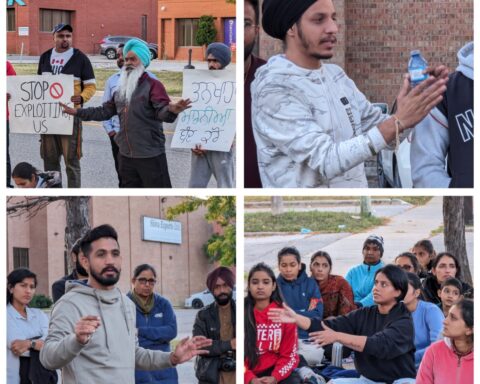The country’s largest and most diverse school board was in the spotlight earlier this month for all the wrong reasons.
The Toronto District School Board (TDSB)’s plan to help Somali-Canadian youth better succeed in school erupted in controversy when a segment of the community denounced their efforts.
“Our children are born and raised in Canada; we don’t need a special brand of education,” argued one parent. “We don’t need more labelling and separation; we’ve had enough already.”
A task force consulted with hundreds of people within the Somali-Canadian community to come up with a list of comprehensive strategies aimed at stemming a significant dropout rate, quelling the high number of expulsions, and encouraging the pursuit of higher education. Despite the stated intentions, those protesting the plan expressed fears that it would further marginalize their children.
Their concerns, though overstated, are justified: Stigmatization and racism are real.
Racism in schools
“For racialized groups, the negative effect of systemic racism continues to erect barriers to the full realization of their potential for success,” reads a 2010 TDSB draft report. “The lowest achieving demographic groups of students in our schools are students of Aboriginal and African background. Students from these groups arguably experience the effects of racism to a greater degree than any other group.”
Nevertheless, heightened sensitivity about stigmatization cannot block real attempts at fostering welcoming, culturally sensitive, and inclusive school environments.
The reality is that marginalization and poor performance exist within various cultural communities – not just within the Somali-Canadian community. Prior to this task force, a similar action plan was implemented to help Portuguese-Canadian youth who also experience high dropout rates and struggle to complete high school. The board held a Portuguese Heritage Month to recognize culture and language and to foster student pride. And previously, the board had approved the creation of an Africentric school, recently expanded to grade eight. It also runs an Aboriginal Education Centre.
It is this dogged promotion of cultural pride and recognition that has garnered accolades from as far away as Germany.
As researchers at Dalhousie University confirmed in one of the few studies on the issue, recognizing and validating the cultural backgrounds and experiences of visible minority youth increases their attachments to school. Schools need “to see themselves as important to creating cultural continuity for higher risk youth and to creating bridges for youth to participate in activities that bring them recognition from their communities,” wrote Michael Ungar and Linda Liebenberg in a 2013 scholarly article for School Psychology International.
Creating space where students can thrive is also about promoting a culture of understanding and empathy. As Kimberley Tavares, who recently completed a PhD in Education, told CBC Radio’s Matt Galloway, teachers of all backgrounds need to be sensitive to the needs of all learners. That includes teaching children themselves to be “culturally bilingual.”
“When you are coming from cultures and home lives that are different than the school life, you have to learn how to change your language, how to address people, how to ask the right questions, how to confront the benign and overt racism in ways that will allow you to move forward and not stop you. Teaching them the skills to do that is really important,” she explained in the interview.
Tavares pointed out that while the system does need changing, it’s important to teach current students how to thrive. That includes providing leadership opportunities, building strong community relationships, and setting high expectations. There’s a myth of inclusivity that needs to be tackled head on, she added.
Criticizing Ontario schools
Others have gone much further in their critiques. George Martell of Education Action: Toronto, offered a scathing rebuke of Ontario’s education system in a response to “The Miseducation of Somali Youth Conference,” sponsored by the TDSB in 2010.
“Are you going to find a way to reach into the strengths of Somali culture – so buried today by the way we run our school system – and bring these strengths into the classroom and into the hearts and minds of Somali youngsters?” he asked rhetorically.
Martell argued that “systemic racism” and “social class bias are deeply embedded in provincial and school board policy,” leading to “apartheid” schools. He blamed budget cuts and curricula that fail to bring real meaning into the lives of students whose futures aren’t as promising as they should be.
Budget cuts at all levels do impact the ability of school boards to offer culturally sensitive training and support. When the federal government slashed funding to immigrant settlement services several years ago, the cuts impacted youth and family programs. In one instance, it meant a cherished and award-winning initiative providing settlement workers in schools was at risk. The pioneering program provided cultural interpreters to act as bridges between new and recent immigrants, their children, and the larger school community. The local school board, itself cash-strapped, sent a letter to Multiculturalism Minister Jason Kenney, pleading for continued support. But even the board had to consider reducing its portion of funding in the face of budgetary shortfalls. Immense public pressure from immigrant communities helped keep the program alive.
Looking to the future
The fact is our student populations are becoming more diverse, though that’s barely mirrored in the staff of most urban schools. And while there is recognition of a need to hire teachers that better reflect the student population, reaching that goal remains a long way off, considering the comparatively low number of teachers who self-identify as visible minorities.
The fact is our student populations are becoming more diverse, though that’s barely mirrored in the staff of most urban schools.
In the meantime, we need to foster culturally sensitive and inclusive schools where student engagement leads to higher graduation rates, the de-glamorization of gangs, and the nurturing of productive citizens of all backgrounds.
It will take time, money, and training. It will also require a willingness to speak and hear truths about the particular struggles facing various ethnic communities.
Amira Elghawaby is an award-winning journalist and human rights advocate. Along with frequent appearances on Canadian and international news networks, Amira has written and produced stories and commentary for CBC Radio, the Ottawa Citizen, the Literary Review of Canada, and the Globe and Mail. She is currently a freelance contributing columnist for the Toronto Star.





